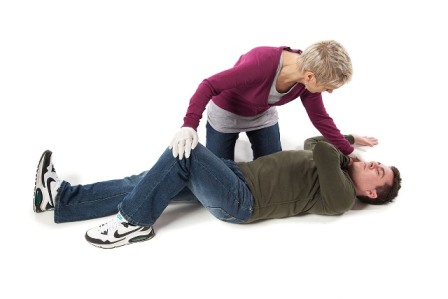Recovery Position 101
Date: Monday, 14 March 2016. -
Blog, First Aid, Training
Perfecting the simple recovery position manoeuvre will contribute towards a casualty’s speedy recovery and the best part is you can practice at home with the help of our Recovery Position 101.
Why are casualties placed in the recovery position?
If a casualty is unconscious and breathing they should be placed in the recovery position to keep their airway clear. Opening the airway and placing the casualty on their side allows any fluids such as vomit to drain out of their mouth preventing them from choking.
You should place an unconscious casualty in the recovery position if you need to quickly retrieve any equipment such as a first aid kit or to call for help.
How do I put someone into the recovery position?
Carry out the following steps to successfully put somebody into the recovery position:
•Once the casualty is lying on their back, kneel down on the floor at the side of them
•place the arm nearest to you at a right angle to their body with their palm facing upwards, towards their head
•tuck their other hand under the side of their head, so that the back of their hand is touching their cheek
•bend the knee farthest from you to a right angle so that their foot in flat against the floor
•Slowly and carefully pull the bent knee towards you to roll the casualty onto their side
•Gently tilt their head back by lifting their chin to open the airway, and check for any obstructions that may prevent them from breathing
•Monitor the casualty’s condition until help arrives

Is the recovery position unsuitable for some medical conditions?
There are some instances when the recovery position wouldn’t work in your favour because the casualty cannot be moved or they require immediate medical treatment.
Normally, once you have established that a casualty is unresponsive you would put them in the recovery position. However, if the casualty has stopped breathing you must call 999 straight away and then proceed with the appropriate care by opening their airway and carrying out CPR.
When a casualty is displaying symptoms of a shock - a potentially life-threatening condition, they must elevate their legs to limit the blood flow to that area, ensuring their vital organs receive enough oxygen. You could say that this was another form of recovery position that also helps casualties who have fainted.
If you suspect that a casualty has suffered a spinal injury it is vital that you do not move them, you should call 999 and seek advice from the ambulance service.
